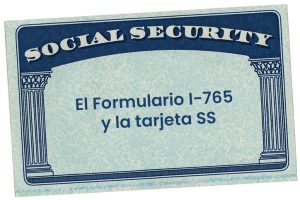When people come to the United States seeking protection, their asylum process may follow one of three different paths — the affirmative asylum process, the defensive asylum process, or the asylum merits interview after a credible fear determination.
Each process is designed to give applicants a fair chance to prove their claim, but they differ in where the case is handled, who decides it, and how the process begins. Understanding these differences can help you know what to expect and prepare your case more effectively.
If you’re new to the asylum process, start with our US Asylum Guide for a full overview of asylum eligibility, rights, and benefits before exploring which path may apply to you.
Understanding the Three Asylum Processes in the U.S.
The United States provides protection to people fleeing persecution through three main asylum procedures. Each path exists to make sure individuals have a fair opportunity to apply for safety — regardless of how they entered the country or when they requested help.
The key difference between these processes depends on your immigration status at the time you seek asylum. If you’re already living in the U.S., your process is different from someone stopped at the border or placed in removal proceedings.
It’s also important to know that you don’t choose your asylum process. The U.S. government determines which path applies to you based on your circumstances — such as whether you’re already in deportation proceedings or passed a credible fear screening at the border.
All three processes — affirmative asylum, asylum merits interview, and defensive asylum — share one purpose: to ensure that no one is returned to a country where they may face persecution or serious harm.
For a full understanding of asylum eligibility and how it protects people fleeing persecution, see our US Asylum Guide.
Overview of the Three Asylum Processes
There are three different ways to apply for asylum in the United States, depending on your situation. Here’s a quick summary before we explore each process in detail:
- Affirmative Asylum (USCIS): Filed with U.S. Citizenship and Immigration Services (USCIS) by individuals who are already in the U.S. and not in removal proceedings.
- Asylum Merits Interview (USCIS): Conducted after a person arriving at the border passes a credible fear interview. The case is reviewed by USCIS to determine eligibility for asylum.
- Defensive Asylum (EOIR): Filed with the Executive Office for Immigration Review (EOIR) by people who are already in removal proceedings. Asylum is used here as a defense against deportation.
Each process has its own steps and procedures, but all require filing Form I-589, Application for Asylum and for Withholding of Removal. The following sections explain each process in more detail, including who qualifies, how to apply, and what to expect.
The Affirmative Asylum Process (USCIS)
The affirmative asylum process is the most common way to seek protection for people already in the United States and not currently in removal proceedings.
Who Can Apply
You may apply affirmatively if:
- You are physically present in the U.S.
- You are not in deportation or removal proceedings.
- You fear returning to your home country due to persecution based on race, religion, nationality, political opinion, or membership in a particular social group.
How to Apply
You’ll need to file an I-589 Form with USCIS within one year of your last arrival in the United States. There is no filing fee for asylum applications. Include supporting documents such as identification, a personal statement, and evidence of persecution.
To learn how to properly complete and submit your application, refer to our Applying for Asylum Status: Step-by-Step Guide.
What Happens During the Interview
After filing, USCIS will schedule a biometrics appointment and later an asylum interview at a local asylum office. You’ll meet with an asylum officer who will review your claim and ask detailed questions about your experiences and reasons for seeking protection.
You can prepare by reviewing our Asylum Interview Questions and Tips to understand what to expect and how to present your story clearly and truthfully.
Possible Outcomes
- Granted Asylum: You receive protection and can stay in the U.S.
- Referred to EOIR: If your application is denied and you don’t have legal status, USCIS will send your case to the immigration court for defensive asylum proceedings.
The Asylum Merits Interview After Credible Fear Determination
The Asylum Merits Interview is a newer process introduced by USCIS for people who arrive at the border without valid documents and express a fear of persecution.
When these individuals are screened by an asylum officer and receive a positive credible fear determination, they may be referred for a merits interview to assess their full asylum claim — without waiting for a lengthy court process.
When Does It Occur
This process applies after a person passes the credible fear interview conducted by USCIS or CBP officials following apprehension at the border or a port of entry.
What to Expect During the Interview
The asylum merits interview is similar to the affirmative asylum interview. An asylum officer reviews your Form I-589, asks questions about your claim, and considers your evidence. You may bring an interpreter and a lawyer if available.
The goal is to determine if you meet the legal definition of a refugee and qualify for asylum under U.S. law.
Possible Outcomes
- Asylum Granted: You are recognized as an asylee and can stay legally in the U.S.
- Referred to EOIR: If USCIS does not grant asylum, your case moves to the immigration court for a defensive hearing.
For interview preparation and confidence, read our Asylum Interview Questions and Tips, which covers what officers typically ask and how to respond effectively.
The Defensive Asylum Process (EOIR)
The defensive asylum process occurs when you are already in removal proceedings before an immigration judge at the Executive Office for Immigration Review (EOIR).
You use asylum as a defense against deportation — hence the name “defensive asylum.”
Who Qualifies for Defensive Asylum
You may be in removal proceedings if:
- USCIS referred your affirmative case after denial.
- You were apprehended at the border or within the U.S. without legal entry.
- You violated immigration status or overstayed a visa.
In these cases, the immigration court, not USCIS, will handle your asylum claim.
How to File and What Happens
You must file Form I-589 directly with the immigration court (not USCIS). The court will schedule one or more hearings where you can present your case, submit evidence, and testify under oath.
You’ll have the chance to explain your fear of returning to your home country before an immigration judge. The government attorney may cross-examine you, and you can bring witnesses or legal counsel to support your claim.
Possible Outcomes
- Asylum Granted: You receive protection and can apply for a Green Card after one year.
- Denied: You may be ordered removed, but you can appeal to the Board of Immigration Appeals (BIA) within 30 days.
If your case is denied, see our detailed guide on Common Reasons for Asylum Denial and How to Appeal to understand your next steps.
What Happens to Border Arrivals and Detained Applicants
When individuals arrive at the U.S. border and express fear of returning home, Customs and Border Protection (CBP) officers conduct an initial credible fear screening.
- If the officer determines that the person has a credible fear, the case may move to the Asylum Merits Interview with USCIS.
- If found not to have credible fear, the individual can request a review by an immigration judge.
- Some applicants may be detained during this process, while others may be released under parole pending their interviews.
This process helps ensure that no one is returned to a country where they could face persecution or torture. To understand how asylum protects people fleeing persecution, see our US Asylum Guide.
“Credible” vs. “Reasonable” Fear Interviews
These two types of interviews are part of the asylum screening system, but they serve different purposes.
- Credible Fear Interview: Conducted for individuals seeking asylum for the first time after arriving at the border. The officer decides whether the person has a credible fear of persecution or torture if returned home.
A positive finding allows the applicant to proceed to the Asylum Merits Interview or defensive asylum process. - Reasonable Fear Interview: Conducted for individuals with prior removal orders who claim fear of returning under withholding of removal or Convention Against Torture (CAT) protection.
The standard of proof is higher — the applicant must show a reasonable possibility of persecution or torture.
Understanding these interviews helps applicants know what to expect if they are detained or have prior removal orders.
Which Process Applies to You?
You do not choose your asylum process — it’s determined by your situation when you apply or when you are apprehended.
| Your Situation | Your Likely Process |
|---|---|
| You’re in the U.S. and not in deportation proceedings | Affirmative Asylum |
| You arrived at the border and passed a credible fear screening | Asylum Merits Interview |
| You’re already in removal proceedings or referred by USCIS | Defensive Asylum |
If you’re unsure which process applies, consult an immigration attorney or a nonprofit legal service for guidance.
You can also refer to our Applying for Asylum Status: Step-by-Step Guide for detailed filing instructions.
Comparison Table: USCIS vs. EOIR
| Feature | Affirmative (USCIS) | Defensive (EOIR) |
|---|---|---|
| Who applies | Person not in removal proceedings | Person in removal proceedings |
| Where filed | USCIS Asylum Office | Immigration Court (EOIR) |
| Interview type | Asylum Interview | Court Hearing |
| Decision made by | USCIS Officer | Immigration Judge |
| Appeal options | Case referred to EOIR | Appeal to Board of Immigration Appeals (BIA) |
| Processing speed | Generally faster | May take longer due to court backlog |
The Asylum Merits Interview functions as a hybrid process — combining elements of both USCIS and EOIR. It aims to resolve cases more quickly for border arrivals who already passed credible fear screening.
To understand average timelines for each process, see our Asylum Application Timeline and Processing Time.
Summary and Helpful Resources
The U.S. asylum system offers three main paths depending on your status and how you entered the country:
- Affirmative Asylum: For people applying proactively through USCIS.
- Asylum Merits Interview: For border arrivals after a positive credible fear finding.
- Defensive Asylum: For those in removal proceedings before an immigration judge.
Each path offers protection under U.S. law to those fleeing persecution.



